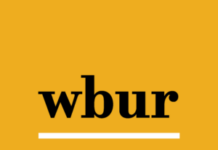
The Federal Communications Commission has adopted a Report and Order eliminating the radio duplication rule for both the AM and FM services. The rule restricts the duplication of programming on commonly owned broadcast radio stations operating in the same service and geographic area.
In the order, the Commission finds that eliminating the radio duplication rule will help struggling stations stay on the air; afford broadcast radio licensees greater flexibility to address issues of local concern in a timely fashion, particularly in times of crisis; assist with format changes; facilitate a potential voluntary digital transition in the AM service; and ultimately allow stations to improve service to their communities.
The radio duplication rule, initially adopted in 1964, has been updated several times over the years to reflect marketplace changes, most recently in 1992.






So, co-owned stations can broadcast the same feed on in-market signals, And it need not be an AM-FM combo. So, it could be KIIS-FM 102.7 and KOST 103.5 broadcasting the same thing in LA? That seems to be the way that I read it (could be mistaken). Not that my suggestion makes any sense whatsoever, but having national formats like the UK has would seem to be how this will play out. And that’s somewhat monotonous.
KIIS and KOST are two of the highest billing stations in LA. Simulcasting one would eliminate the revenue of the other. That’s crazy. We already have a lot of AM stations simulcast on FM, such as WBBM Chicago and KCBS in San Francisco. There is no FCC law against national formats. They’ve existed in this country for years. It’s how a lot of small market locally owned stations stay on the air, running national formats from Westwood One or syndicated shows. SkyView is also offering national formats. If you travel outside the major markets, away from the corporate stations, you’ll hear lots of small stations running satellite formats.
Will this apply to FM Translators?
No. A translator’s purpose; in fact, the only thing it is allowed to do, is to rebroadcast its primary station while filling in coverage gaps. Many AM stations now serve as primary stations for FM translators.